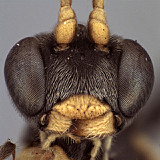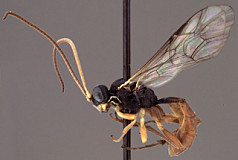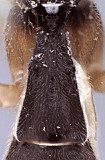Synagrypnus Foerster, 1869: 203. Type species: Synagrypnus blancoburgensis Schmiedeknecht, 1914. Based on subsequent inclusion by Schmiedeknecht, 1914. Monobasic. Synonymized with Hodostates by Meyer (1936) and with Synoecetes by Townes et al. (1965).
Polyrhysia Foerster, 1869: 204. Type species: Tryphon tenuicornis Gravenhorst, 1829. Subsequent designation by Viereck (1914), based on first inclusion of this and another species in Polyrhysius by Thomson, 1893.
Polyrhysius Thomson, 1893: 1999. Unjustified emendation for Polyrhysia Foerster, 1869. See Perkins (1962) for an explanation of the Thomson emendations.
Glossorhachis Aubert, 1985. Type species: Tryphon tunetanus Schmiedeknecht, 1900. Monobasic and original designation. Initially proposed as a subgenus of Coelorhachis, and subsequently (Aubert 2000) transferred to Synoecetes.







